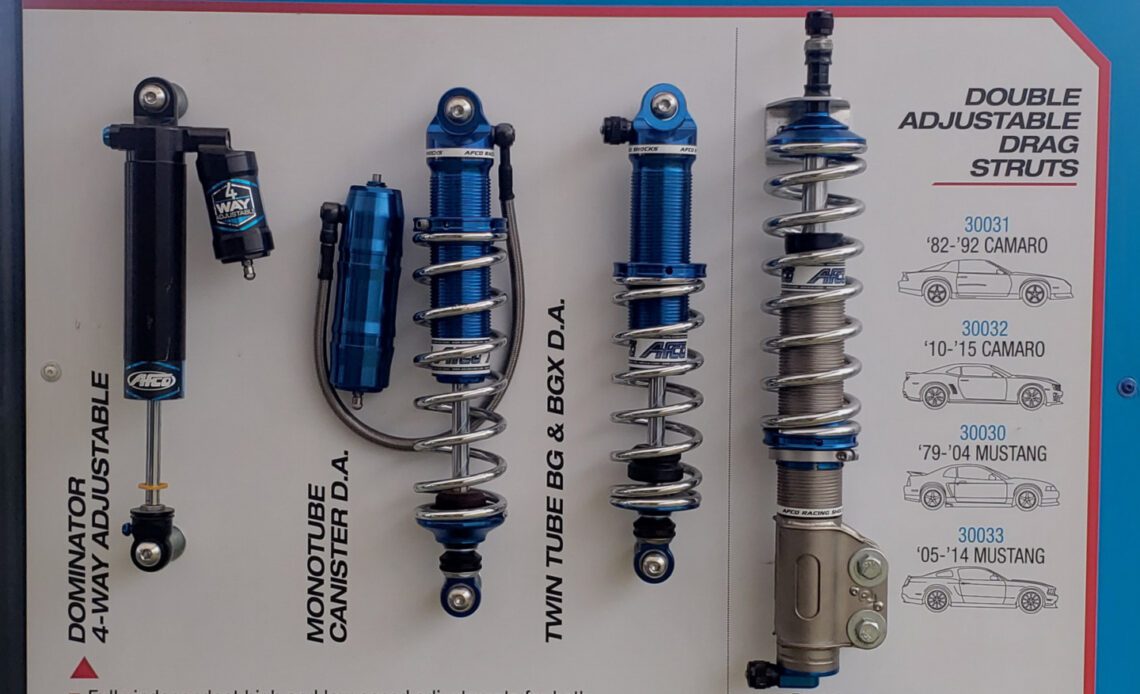Selecting the right set of shocks for your drag racing application is an incredibly important task. Different forms of racing require a certain type of shock, and there are numerous factors that determine the shock that will work best for a specific vehicle. We spoke with Eric Saffell, National Account Manager at AFCO to learn more about shock selection, what shocks work for certain applications, and how to get the most out of your shocks.
Just because a shock will fit on your vehicle doesn’t mean it’s going to be the right shock for your racing program. The type of racing you’re going to do, the engine you use, the type of transmission, and other factors all play into selecting the right product for your application. You also need to think about any future changes you may make to the vehicle before you purchase a set of shocks.
The type of racing you do will dictate the shocks you need to use. Horsepower, type of tire, and condition of the surface are just a few factors to consider, as well.
“It’s important to first evaluate the target for the build in terms of performance. It’s also helpful to look at the vehicle’s current setup and think about what you want to do in the future to ensure you make the correct purchase the first time. This can save you some money and will help improve the vehicle at the track,” Saffell says.
This type of information will help you decide if a single- or double-adjustable shock is right for your vehicle.
So, what’s the difference between a single- and double-adjustable shock? It comes down to how the shock functions and how it can be adjusted. Some single-adjustable shocks tune only compression, and some change both compression and rebound in a fixed ratio with a single adjustment. We should specify that specifically AFCO’s shocks adjust only extension, called rebound. A double-adjustable shock allows you to make adjustments to how the shock’s extension and rebound behave independently of one another.
Single- and double-adjustable shocks come in many different forms. The amount of horsepower you’re trying to put down will play a role in what type of shock you need.
To finish this quick crash course in drag racing shock basics, Saffell provides a short summary of how the right shocks will help a vehicle perform better at the track.
“Since shocks control when the weight gets transferred like timing devices, the correct shock for the application provides proper force values to manipulate the…
Click Here to Read the Full Original Article at DragzineDragzine…

